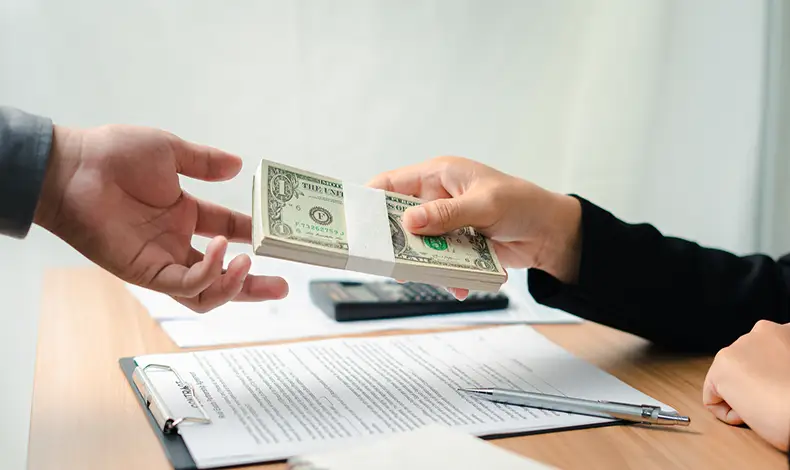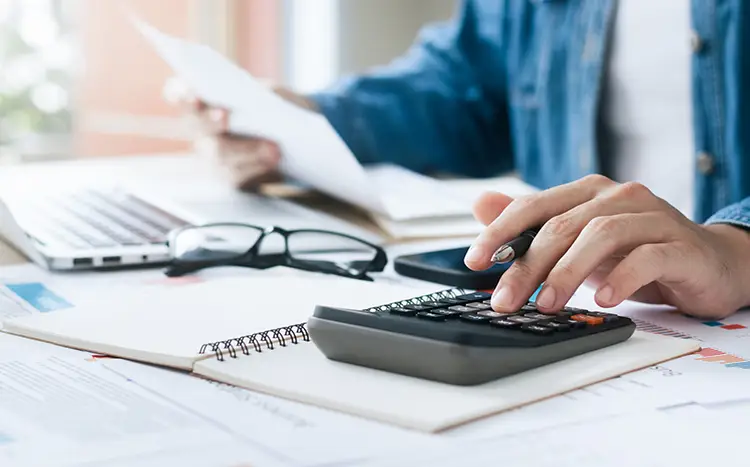How Much Should I Put Down on a House?
Published on June 10, 2024 | 7 Minute read

Melanie
Ortiz Reyes
Content Specialist
When purchasing a home, one of the most critical financial decisions you'll make is determining how much to put down as a down payment. The amount you choose to put down can significantly impact your mortgage terms, monthly payments, and overall financial health. Unsure of how much to put down? Let's figure it out.
Understanding Down Payments
A down payment is a portion of the home's purchase price that you pay upfront, out of pocket. The remaining amount is typically financed through a mortgage. For example, if you're buying a $300,000 home and put down $60,000, you're financing the remaining $240,000 with a mortgage. Pretty simple, right? Now, let's explore how much people typically put down.

What Are Some Common Down Payment Amounts?
1. 20% Down Payment: Traditionally, a 20% down payment is considered ideal. It allows you to avoid private mortgage insurance (PMI), secure better mortgage rates, and start with substantial equity in your home. However, it can be challenging for many buyers to save this amount, especially in high-cost areas.
2. 10% Down Payment: Putting down 10% is a common alternative for buyers who can't afford 20%. While you'll likely need to pay PMI, it can still provide relatively favorable mortgage terms and requires less upfront cash.
3. 5% Down Payment: A 5% down payment is often the minimum required for conventional loans. This option allows buyers to purchase a home sooner but typically involves higher monthly payments and PMI.
4. 3.5% Down Payment: FHA loans, backed by the Federal Housing Administration, require as little as 3.5% down. This option is popular among first-time homebuyers and those with lower credit scores but comes with PMI and potentially higher interest rates.
5. Zero Down Payment: Some government-backed loans, such as VA loans for veterans and USDA loans for rural properties, offer zero down payment options. These loans are beneficial for eligible buyers but come with specific eligibility requirements and potential higher fees.
According to Houzeo, homebuyers were putting down around 14.5% in the summer and fall of 2023.

What Are the Benefits of a Larger Down Payment?
1. Lower Monthly Payments: A larger down payment reduces the amount you need to finance, leading to lower monthly mortgage payments. This can make your mortgage more manageable and free up funds for other expenses or savings.
2. Avoiding PMI: By putting down at least 20%, you can avoid PMI, which can add $30 to $70 per month for every $100,000 borrowed. Over time, this can result in significant savings.
3. Better Mortgage Rates: Lenders view larger down payments as less risky, often offering lower interest rates. Even a slight reduction in your interest rate can lead to substantial savings over the life of your loan.
4. Increased Home Equity: Starting with more equity in your home can provide financial security and flexibility. If home values decline, you're less likely to owe more than your home is worth, and you have more equity to tap into if needed.
What Are Some Drawbacks of a Larger Down Payment?
1. Depleting Savings: A large down payment can deplete your savings, leaving you with less financial cushion for emergencies, home repairs, or other expenses.
2. Opportunity Cost: Money used for a down payment could potentially earn higher returns if invested elsewhere. Consider the potential returns on investments compared to the interest saved on your mortgage.
3. Delayed Home Purchase: Saving for a larger down payment can take time, potentially delaying your ability to purchase a home. In rising real estate markets, waiting could mean higher home prices and increased overall costs.

What Are the Benefits of a Smaller Down Payment?
1. Faster Home Purchase: A smaller down payment allows you to purchase a home sooner, which can be advantageous in a competitive market or if you're ready to move.
2. Preserving Cash Reserves: Keeping more cash on hand can provide a financial buffer for emergencies, investments, or home improvements.
What Are the Drawbacks of a Smaller Down Payment?
1. Higher Monthly Payments: A smaller down payment means financing more of the home's purchase price, resulting in higher monthly mortgage payments.
2. PMI Costs: With less than 20% down, you'll likely need to pay PMI, increasing your monthly expenses.
3. Higher Interest Rates: Lenders may charge higher interest rates for lower down payments, increasing the overall cost of your mortgage.

Factors to Consider
When deciding how much to put down on a home, consider the following factors:
1. Financial Goals: Assess your long-term financial goals and how a larger or smaller down payment fits into your overall plan. Are you prioritizing lower monthly payments, avoiding PMI, or preserving cash reserves for other investments?
2. Emergency Fund: Ensure you have enough savings left after your down payment to cover emergencies, home repairs, and unexpected expenses. A healthy emergency fund can provide peace of mind and financial stability.
3. Market Conditions: Consider current real estate market conditions and interest rates. In a rising market, purchasing sooner with a smaller down payment might be advantageous. Conversely, in a stable or declining market, waiting to save for a larger down payment could be beneficial.
4. Loan Programs: Explore different loan programs and their requirements. Some programs, like VA and USDA loans, offer favorable terms with low or no down payment requirements. FHA loans can be a good option for those with lower credit scores or limited savings.
5. Personal Comfort: Ultimately, choose a down payment amount that aligns with your financial comfort level. Avoid stretching your budget too thin or feeling pressured to meet arbitrary benchmarks.
Real-Life Scenarios
To illustrate how different down payment amounts can impact your mortgage, let's consider a few examples:
1. 20% Down Payment: Kristina is buying a $400,000 home and puts down 20% ($80,000). She avoids PMI and secures a lower interest rate, resulting in a monthly mortgage payment of $1,526 (excluding taxes and insurance). She retains a healthy emergency fund and enjoys the peace of mind that comes with lower monthly payments and higher home equity.
2. 10% Down Payment: Edgar opts for a 10% down payment on the same $400,000 home ($40,000). He pays PMI, which adds $150 to his monthly mortgage payment. His total monthly payment is $1,874. Edgar has less equity in his home initially but retains more cash reserves for other investments and expenses.
3. 5% Down Payment: Michelle chooses a 5% down payment ($20,000) on her $400,000 home. She pays PMI and faces slightly higher interest rates, resulting in a monthly payment of $2,105. Michelle enters the housing market sooner but has higher monthly payments and less initial equity.
4. Zero Down Payment: Joe, a veteran, uses a VA loan to purchase a $400,000 home with zero down payment. His monthly mortgage payment is $2,054. He preserves his savings for other needs and investments, benefiting from the favorable terms of the VA loan program.
Deciding how much to put down on a home is a complex and personal decision that depends on your financial situation, goals, and market conditions. While a larger down payment can offer significant benefits like lower monthly payments, avoiding PMI, and better mortgage rates, it also requires more upfront cash and can delay your home purchase. Conversely, a smaller down payment allows for quicker homeownership and preserves cash reserves but comes with higher monthly payments and potential PMI costs.
Evaluate your financial goals, emergency fund, market conditions, and personal comfort level when determining the right down payment amount for you. Consulting with a mortgage professional can also provide valuable insights and help you navigate the decision-making process.